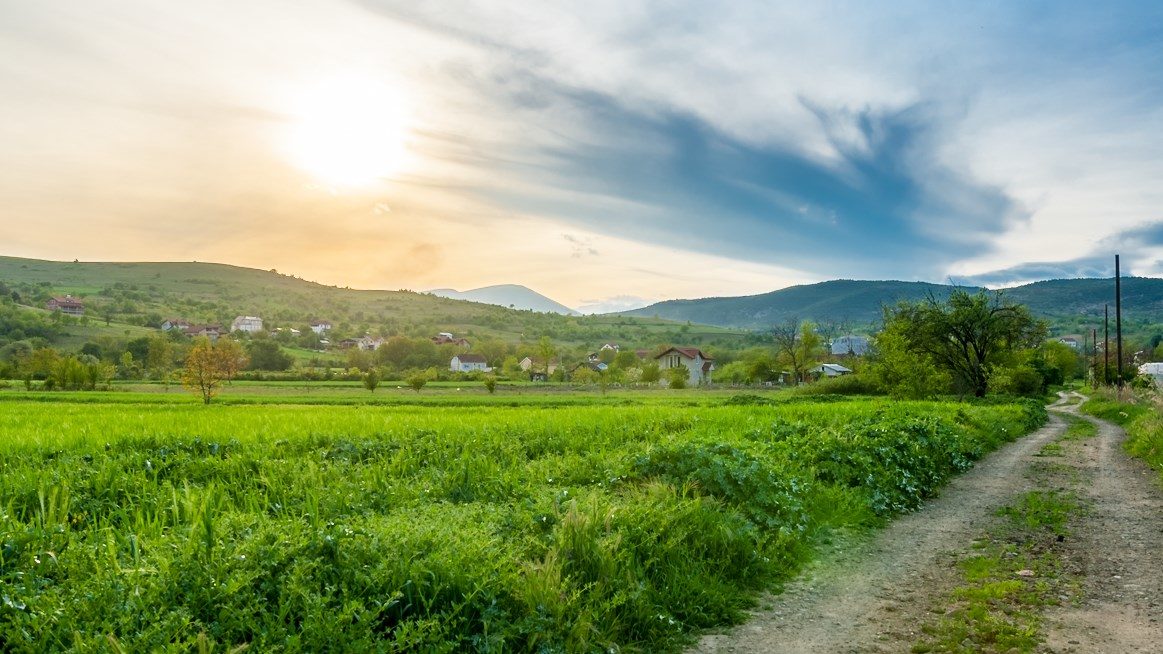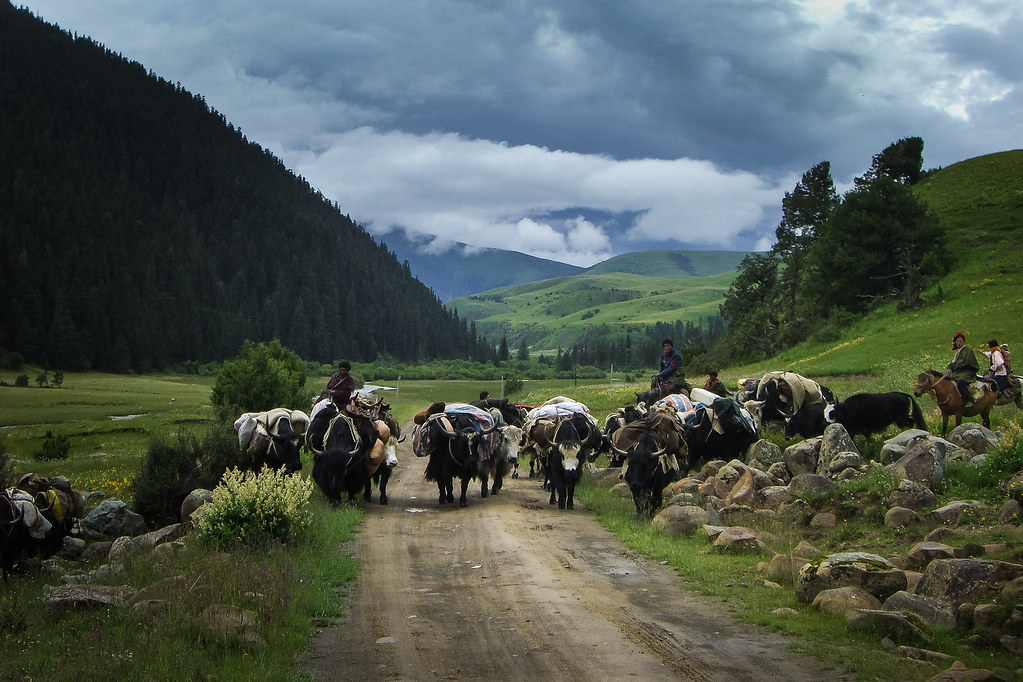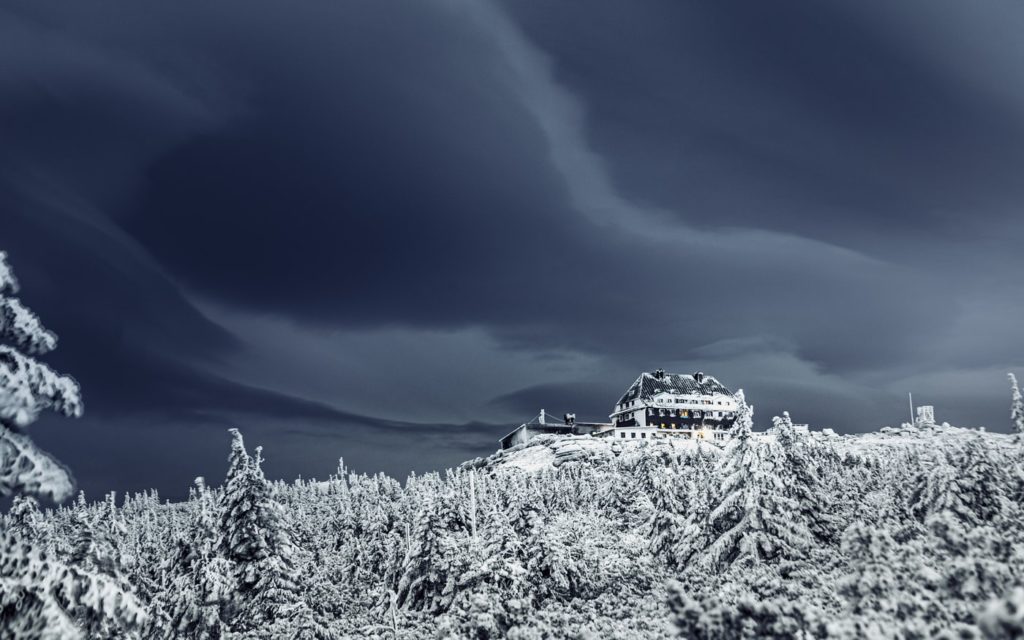This article has been necessitated by the countless debates I have with photographers about the kind of lenses that should be used for landscape shots. Most of the time, people are trying to convince me that wide-angle lenses are the best when it comes to landscape shots. The fact is that most of the landscape shots that I’ve done (which aren’t panoramas) are actually shot at 35mm or longer (on a crop sensor).

So why isn’t wide-angle the only choice for shooting landscapes?
Why Perspective is So Important in Landscape Photography
Most times that I shoot landscapes there is some cool stuff in the foreground, but there are also interesting things placed much farther back from the place I am positioned. So if I were to use an 11mm lens, I would either lose the foreground, since it would have to be basically behind me, or have the more distant elements turn out too small to serve as the main subject for the shot. A longer lens is the solution for that problem. Even though I’d have to go backwards quite a bit, the zoom compression takes care of the elements, and I'd have both elements adequately sized and positioned to make for a decent shot.
 Photo by Sven Hunger
Photo by Sven Hunger
How Guiding Lines Can Be Used Deliberately for Better Landscapes
On the other hand, if you were to shoot a tight street with a wide-angle lens, you could distort the lines way too much and lose the guiding lines effect. If your lens is too long, however, it can achieve the same effect, but in the opposite direction. That is why you need to be prepared with most of the focal lengths.
 Photo by Olli Henze
Photo by Olli Henze
Usually, the guiding lines should lead to something which is interesting enough to keep the attention of the viewer. But they also need to feel natural enough to subtly draw the eye to the right direction. Therefore the right focal length is crucial in this situation.
Getting Better Landscapes With Zoom Compression
This phenomenon works in a simple way: it pulls the distant elements closer to the nearest ones, giving the illusion that they are bigger than they really are. However, longer lenses will shorten the field of focus, so if you want everything in focus, then you will have to use focus stacking to achieve it. It definitely complicates things more often, especially with focal lengths above 100mm, but it doesn’t mean that this is impossible to do. This is a good thing if you want out-of-focus foreground elements, which are hard to obtain with a wide-angle lens. On the other hand, you can practically place the foreground elements 50-100 cm in front of the lens with wide-angle lenses (you could actually just hold a branch in front of it) and achieve the effect that way. However, you should have in mind that this is not always as simple as it sounds.
 Photo by Matt Ming
Photo by Matt Ming
The image EXIF data shows 7mm focal length, but the sensor size on that camera has a crop factor of 6x, making it equal to a 42mm lens on a full-frame sensor.
Basically, all those landscape shots which depict the moon filling the sky are achieved using a long lens, and possibly some focus stacking. Due to the zoom compression, the size of the moon is exaggerated, while the overall scene itself is a tad compressed. If you were to shoot it with a shorter focal length and crop afterwards, then the moon wouldn’t be that big in size, even if you did match the foreground elements in size.
In the opposite scenario, if you want to wrap more things around a certain subject that is really close by you, then you could use a wide-angle lens to make it appear smaller when compared to the surroundings and foreground, which will end up skewed a bit due to distortion and the lack of zoom compression.
What You Should Take Away from This for Your Landscape Photography
Don’t limit yourself with focal lengths. When you are out to shoot some landscapes, bring along some longer lenses, as well. Experiment! When you find a scene that you like, shoot wide, and then gradually go tighter until you find the right focal length for that particular spot. When it comes to scenes with snow (or grass that can be easily disturbed) then you need to take the opposite approach, since you will be getting closer with the wider lenses and you won’t capture the footsteps you leave behind.
Photography is an art form which isn’t strictly governed by rules, so don’t think that wide-angle lenses are for landscape only, while longer lenses are only useful for portraits. Every lens can shoot everything: you can do a portrait with a fisheye lens, and do a landscape with a superzoom one.
Which are your favorite lenses for landscape? Are you using longer focal lengths for your landscape shots? Feel free to share in the comments below. We would like to see some landscape pictures shot with longer focal lengths!





7 Comments
I use a Nikor 24-85mm f3.5-4.5 for many of my landscape shots. I’ll have to try using a longer lens.
That is for sure, don’t limit yourself to just one lens, even if it is a zoom that covers good deal of the focal lengths. Try a wider one as well.
Cheers!
Excellent advice Dzvonko, thank you for sharing your tips.
And I agree with Jim Webb with regards the go to lens for landscapes. I mainly use my 24-70 on a FF but have been known to use my 70-200 for the odd grab shot if I’m on the summit of a hill or the side of a mountain with no foreground to worry about. I guess you could say that as my elevation increases, so does my focal length.
Cheers
Rupert
Which lens is most suitable for landscape with Nikon D90?
Great article and glad to read it as I though I was turning weird 😉 LOL
I usually use a 16-35mm zoom (Full Frame) for landscape shoots but since a little while I’m having some fun, along with some great results, using two other prime lens. One is a 90mm and I really love to use it and the second one is a vintage russian Helios 58mm. Both are usually used for portrait photography.
So, yes, I totally agree with this idea and it is very motivating to try something new and to enjoy great results.
Cheers,
Jeremy
For landscapes, I use a 24 mm (on a crop sensor: 38 mm)
Absolutely!
Whilst my Tokina 12-24mm is my favourite bit of kit these days (I have to practically be dragged away from it!)
Two years ago my old zoom died on me only 1 day before leaving for a holiday to the Isle of Man.
So I managed to pick up UV & Polarizer filters to fit my Canon Nifty-Fifty and had some great fun shooting the whole week on a 50mm lens. It really challenged me to get off my backside and look at the landscape in a new way.
I was very happy with the results !